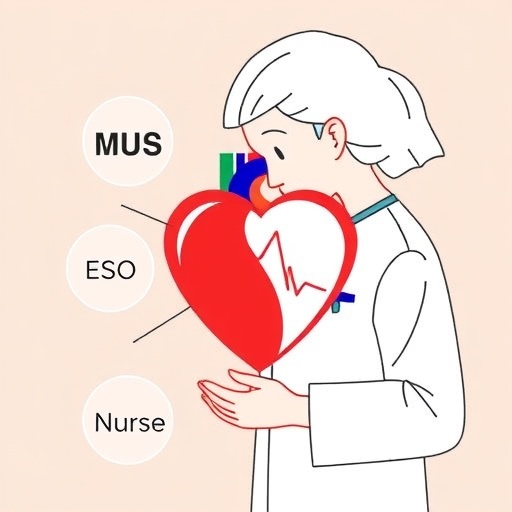In recent years, the United States has seen a disturbing escalation in opioid-related emergencies among pediatric populations, drawing increased attention from healthcare professionals and policymakers alike. A groundbreaking study presented at the American Academy of Pediatrics’ 2025 National Conference & Exhibition reveals an alarming trend: emergency medical service (EMS) calls involving opioid exposure among children ages 11 to 18 have dramatically increased, particularly among younger adolescents. This research unpacks critical data from the National Emergency Medical Services Information System (NEMSIS), offering unprecedented insight into how the opioid crisis is impacting vulnerable age groups differently, with significant implications for public health interventions and policy formulation.
The opioid epidemic, which has persisted since the mid-1990s, has evolved from primarily affecting adults to increasingly impacting younger populations, raising multifaceted challenges. The study, “EMS Calls for Pediatric Patients Ages 11-18 years with Opioid Exposures using NEMSIS data,” scrutinizes EMS reports spanning from 2019 to 2023, distinguishing between middle school-aged children (11-13 years) and high school-aged adolescents (14-18 years). This stratification is crucial, revealing divergent patterns of opioid exposure that demand tailored clinical and preventative strategies.
The investigators observed a consistent rise in opioid-related EMS calls among pre-teens, with the number of calls more than doubling over the five-year period. Specifically, there was a stark increase from 255 calls in 2019 to 560 calls reported in 2023 within this subgroup. High school students experienced a different trajectory, with opioid exposure calls rising sharply through 2022, followed by a slight reduction in 2023. These variations suggest that while the epidemic continues to infiltrate younger cohorts with escalating intensity, some stabilization or early impacts of intervention efforts might be observed among older adolescents.
This dataset, sourced from NEMSIS, incorporates holistic emergency response details, including chief complaints identified via selected ICD-10 codes linked to opioid exposure and the administration of naloxone—the frontline opioid antagonist used in overdose rescues. The study’s methodological rigor, utilizing chi-square analyses and linear regression to evaluate trends and demographic distributions, reinforces the credibility of these concerning findings. Such granular data analysis paints a vivid picture of opioid-related health emergencies in pediatric populations, illuminating age-specific vulnerabilities and risk factors.
A fascinating demographic divergence emerges upon examining sex distribution within these age categories. In the younger cohort, females predominate EMS calls related to opioid exposure, accounting for approximately 61.1% of cases. Contrastingly, among high school youth, males constitute the majority of opioid-related emergency calls, representing nearly 59.4% of incidents. This gender disparity underscores the necessity for sex-specific approaches in both clinical evaluation and the development of public health interventions, recognizing that risk profiles and exposure scenarios might vary considerably by gender.
Another crucial dimension of the study is the assessment of acuity levels at presentation, revealing that younger children not only experience higher rates of opioid exposure but also present with more severe clinical states. Among middle school patients, nearly a quarter (24.5%) reach the EMS in a critical condition, compared to 15.7% in the older adolescent population. These acuity distinctions emphasize the intense physiological and developmental impacts opioids exert on younger users, possibly due to lower body mass, less physiological resilience, or differing substance use contexts, all of which necessitate urgent, age-appropriate medical responses and preventive measures.
Healthcare experts, including Dr. Sonia Lam, the study’s lead author and pediatric emergency medicine fellow, stress the urgency of addressing these trends. The increasing incidence of opioid exposures among pre-teens is a clear signal for the medical community and legislators to intensify efforts aimed at safeguarding this vulnerable demographic. Dr. Lam articulates a vision of targeted interventions informed by robust epidemiological data, recognizing that a one-size-fits-all approach may be inadequate amidst the complex landscape of pediatric substance use.
The implications of this research extend deeply into public health policy realms. Given the nuanced differences in opioid exposure patterns by age and sex, legislative authorities have an unprecedented opportunity to craft finely tuned policies that prioritize early detection, education, and intervention programs tailored to younger children, especially girls who appear disproportionately affected. Equally important is the enhancement of awareness among caregivers, educators, and healthcare providers, ensuring early recognition and swift response to opioid-related emergencies.
The study’s retrospective design harnessing the expansive NEMSIS database allows for robust longitudinal analysis, capturing emergent trends in a comprehensive manner unmatched by many prior investigations. NEMSIS’s nationwide scope, encompassing emergency responses from a vast spectrum of geographic and demographic contexts, affords a broad yet detailed understanding of pediatric opioid exposure, making this study a critical benchmark for future research and intervention planning.
Furthermore, the findings prompt critical reflection on the physiological and behavioral factors underpinning these trends. The higher acuity and increased prevalence among younger children could correlate with accidental ingestions, higher potency opioids, or distinct patterns of illicit substance availability in this age group. Additionally, the gender disparities might reflect social, psychological, or environmental influences that warrant deeper qualitative investigation to unravel underlying causes and inform more resilient prevention frameworks.
Clinically, these data demand heightened vigilance during pediatric emergency care. EMS professionals and emergency department teams must be equipped with protocols sensitive to the age-specific presentations and risks detailed in this study. Training should emphasize rapid recognition of opioid toxicity in children and adolescents, appropriate naloxone administration, and integration of post-rescue counseling and intervention to mitigate recurrence risk and facilitate connection to addiction treatment services.
Despite the gravity of these findings, it is important to acknowledge that the study’s data do not indicate a uniform crisis trajectory across all age groups. The observed reduction in calls among older adolescents post-2022 may reflect early impacts of education, policy shifts, or broader societal trends. These nuances highlight the dynamic nature of the opioid epidemic and the necessity for ongoing, data-informed surveillance to rapidly adjust public health responses as new patterns emerge.
Ultimately, this groundbreaking research offers both a warning and a roadmap for confronting the pediatric dimensions of the opioid crisis. The persistent rise in opioid exposure among middle school-aged children, coupled with high acuity presentations, spotlights a silent epidemic with potentially long-term ramifications for developmental health and societal well-being. Stakeholders in medicine, public health, and policymaking are called to action to expand age-appropriate, targeted interventions that address the unique vulnerabilities of children and adolescents, leveraging precise data to curb this troubling trend before its consequences become irrevocable.
Subject of Research: People
Article Title: Emergency Calls for Pediatric Opioid Exposure on Rise: New Research
News Publication Date: 26-Sep-2025
Keywords: Opioids, Drug safety, Pediatrics, Poisons
Tags: adolescent opioid-related emergenciesemergency medical service callsemergency response to pediatric opioid caseshealthcare policies for pediatric opioid crisisNEMSIS data analysisopioid crisis impact on childrenopioid epidemic effects on youthopioid exposure in middle school childrenpediatric opioid exposure trendspublic health interventions for opioidsrising opioid calls among adolescentstailored strategies for opioid prevention





